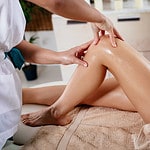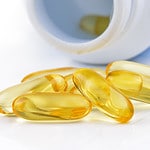Introduction
Knee pain is a frequent issue for adults of any age. One-third suffer it at some point in their lives. Treatments exist, yet rest and recovery time is often forgotten.
Rest gives the body time to heal and offers multiple benefits. It reduces activity, provides relaxation and eases stress on the joint. Inflammation and swelling also lessen, improving range of motion and decreasing pain. The body can also repair damaged tissue or cure existing injury/illness that causes knee pain. So, rest prepares the body for future activities by increasing endurance and strength.
Individuals with knee pain must know the advantages of proper rest and recovery to achieve successful treatment. Adequate sleep and breaks from intense activities can help relieve symptoms faster than without it. Depending on the condition, rest could be short-term bedrest or lowering daily activities until symptoms improve.
The benefits of rest and recovery are:
- Reduces activity
- Provides relaxation
- Eases stress on the joint
- Lessens inflammation and swelling
- Improves range of motion
- Decreases pain
- Repairs damaged tissue
- Cures existing injury/illness
- Increases endurance and strength
The Benefits of Proper Rest and Recovery
Rest for knee pain? Yes! It’s key. Rest and recovery can help reduce inflammation and pain. Also, it can improve circulation and promote healing. Learn the benefits of proper rest and recovery if you have knee pain. It can really help!
Improved Mobility
Knee pain can stop you from doing activities you love. To reduce stiffness, you need to rest your knee. If it’s a minor injury, this might mean taking a break from high-impact activities. But if the pain is continuing, talk to a doctor.
Physical therapy can help if medicine isn’t helping. Your physical therapist can assess your range of motion and tell you which exercises will be helpful. Over time, these exercises will increase flexibility, strength, and balance.
Even if you have an underlying condition like arthritis, bursitis, tendonitis, or PFPS, rest can still improve mobility. Pay attention to your body and give it rest when needed to keep your movement patterns healthy.
Reduced Swelling and Inflammation
Proper rest and recovery are vital for those with knee pain. It can help bring relief from pain and lessen swelling and inflammation. When you have knee pain, your body feels worn out and hurts. That is because it needs time to heal.
Resting gives the body time to relax its muscles, which can reduce inflammation from an injury or overuse of the knees. Additionally, it can decrease the intensity of the pain by permitting the muscles in the area to unwind.
To lower swelling and inflammation, try the following:
- Take a break from vigorous activities until you are stronger.
- Elevate your legs when needed.
- Ice your knees.
- Do low-impact exercises such as walking or cycling.
- Avoid high-impact activities until you are healed.
- Get a massage when possible.
- Drink lots of water.
- Do yoga poses for knee pain relief.
- Wear compression knee sleeves while performing activities that may benefit from extra support.
Improved Strength and Flexibility
Rest and recovery are key for any workout routine that wants to be successful. Not only does it prevent overtraining, it also offers heaps of health benefits, especially for those struggling with knee pain. Rest and recovery help with strength and flexibility around the knee, plus many other physical advantages.
When used in moderation, rest gives muscles a chance to rebuild and recover between workouts. This keeps them healthy, so you can go longer during exercise without feeling aches or fatigue. Over time, taking breaks between workouts will make your muscles stronger as they produce more muscle fibres when you start up again.
Stretching before or after a workout will improve mobility around the knee joint, while increasing blood flow to reduce stiffness. This will make it easier to do everyday tasks like walking up stairs or getting up from a seated position.
Including proper rest days in your fitness plan is good for muscle strength, joint health, and preventing injury. You’ll get improved flexibility around joints like the knee, plus support for the immune system to fight muscle fatigue from over-training. Rest days are an important part of any fitness program!
Reduced Risk of Injury
Proper rest and recovery is a must for an effective training plan. Without giving their bodies enough time to recover, athletes are more prone to overuse injuries. Repetitive movement or too much pressure on the same muscle group can cause pain and inflammation. This can lower performance and cause long downtime. Pushing without rest also leads to fatigue, which can cause poor technique and higher injury risk.
By resting between workouts, athletes can prevent overuse injuries and connective tissue strain. This helps them stay healthy to train with more intensity. Rest also helps the body heal, like regenerating muscle fibers and restoring glycogen stores (fuel). This will help athletes reach peak performance each session, allowing them to gain more from exercise and increase endurance.
Tips for Rest and Recovery
Rest is key for knee pain management. Give your body time to recover between workouts. Listen to your body and give it the rest it needs.
Here are tips for resting and recovering if you have knee pain:
Proper Sleep Hygiene
Establishing proper sleep hygiene is key to optimal health, better cognitive performance, and relief from knee pain. Not getting enough rest can make it harder to manage pain and daily activities. Those with knee pain need to prioritize rest. Here are some tips:
- Wake up at the same time each day to get your body in a routine.
- Try not to nap during the day, as it can interfere with nighttime sleep.
- Create a bedtime ritual like dimming lights and avoiding screens or stressors.
- Make your bedroom environment conducive to sleep: mattress/pillow, cool temperature, and minimal noise.
- Avoid caffeine in the afternoon/evening.
- Exercise up to two hours before bedtime.
- Manage stress through relaxation, such as yoga or meditation.
Cold Therapy
Research shows cold therapy is an effective way to reduce knee injury pain. It shrinks the blood vessels, limiting inflammation and swelling. It also numbs the area and lubricates tissues, giving temporary relief from pain.
Cold therapy can be done with ice packs, coolant sprays, etc. But users must wrap the area in a towel or cloth before applying the cold pack/spray for extra protection. Treatments should last no more than 20 minutes. Reapply several times per day if needed. Make sure to allow time to rest between treatments.
Avoid activities that could hurt the condition or cause extreme temperatures or unsafe ice use:
- Do not apply cold therapy for more than 20 minutes at a time.
- Wrap the affected area with a towel or cloth before applying the cold pack/spray.
- Allow time to rest between treatments.
- Do not engage in activities that could worsen the condition or cause extreme temperatures or unsafe ice use.
Compression
Compression is a great way to reduce swelling and inflammation, and help you heal faster. Your doctor or physical therapist can suggest different kinds of compression. Using the wrong kind or amount of pressure can decrease blood flow, so it is essential to follow your healthcare provider’s advice. This often means using customized supports with straps that let you adjust the pressure on different parts of your knee. Remember not to leave compression on for too long.
A good warm-up and cool-down routine with dynamic stretching is ideal for low-impact physical activity during recovery, while avoiding further injury. When stretching after compression, use mild pressure instead of too much strain.
Regular Exercise
Exercise is a great way of resting and recovering. It gives you physical and mental health benefits. It can also help you get better sleep, reduce stress and make your immune system stronger.
Aim for exercising three to four times a week, for at least thirty minutes per session. Start with gentle exercises to move all the major muscles. Then, when you’re ready, progress to more challenging ones like weight training or intense cardio activities like spinning or boxing. Always warm up before exercising. Cool down after and stretch throughout the day for best rest and recovery.
Conclusion
Ultimately, rest and recovery should be a main concern for those with knee pain. By taking measures to reduce inflammation and allowing the body to rest and heal, knee pain can be improved or even gone.
Some of the ways to do this include:
- Sleep
- Low-impact exercise
- Icing the injury
- Only returning to activities when the pain is gone
If the pain is severe, medical attention should be sought straight away to avert long-term harm. Taking charge of one’s health is key to living healthier; rest and recovery is simply one part of this experience.
Frequently Asked Questions
Q:What are the benefits of proper rest and recovery for knee pain sufferers?
A: Proper rest and recovery can help reduce inflammation, improve range of motion, and reduce the risk of further injury. By resting the knee and allowing it to heal, the joint can become stronger and more able to withstand the demands of physical activity. Additionally, proper rest and recovery can help reduce the severity of knee pain, allowing sufferers to more effectively manage their condition.
Q: How long should a person rest and recover from knee pain?
A: The amount of time needed to rest and recover from knee pain depends on the severity of the condition. Generally speaking, it is recommended that sufferers rest and recover for at least a few days in order to allow the joint to heal. If the pain persists, it may be necessary to take a longer break from physical activity in order to allow the knee to fully heal.
Q: What are some tips for proper rest and recovery from knee pain?
A: Some tips for proper rest and recovery from knee pain include avoiding activities that cause pain, icing the knee to reduce inflammation, taking anti-inflammatory medications, using a knee brace to support the joint, and doing low-impact exercises to maintain the range of motion. Additionally, it is important to give the joint adequate time to heal before returning to more strenuous activities.





